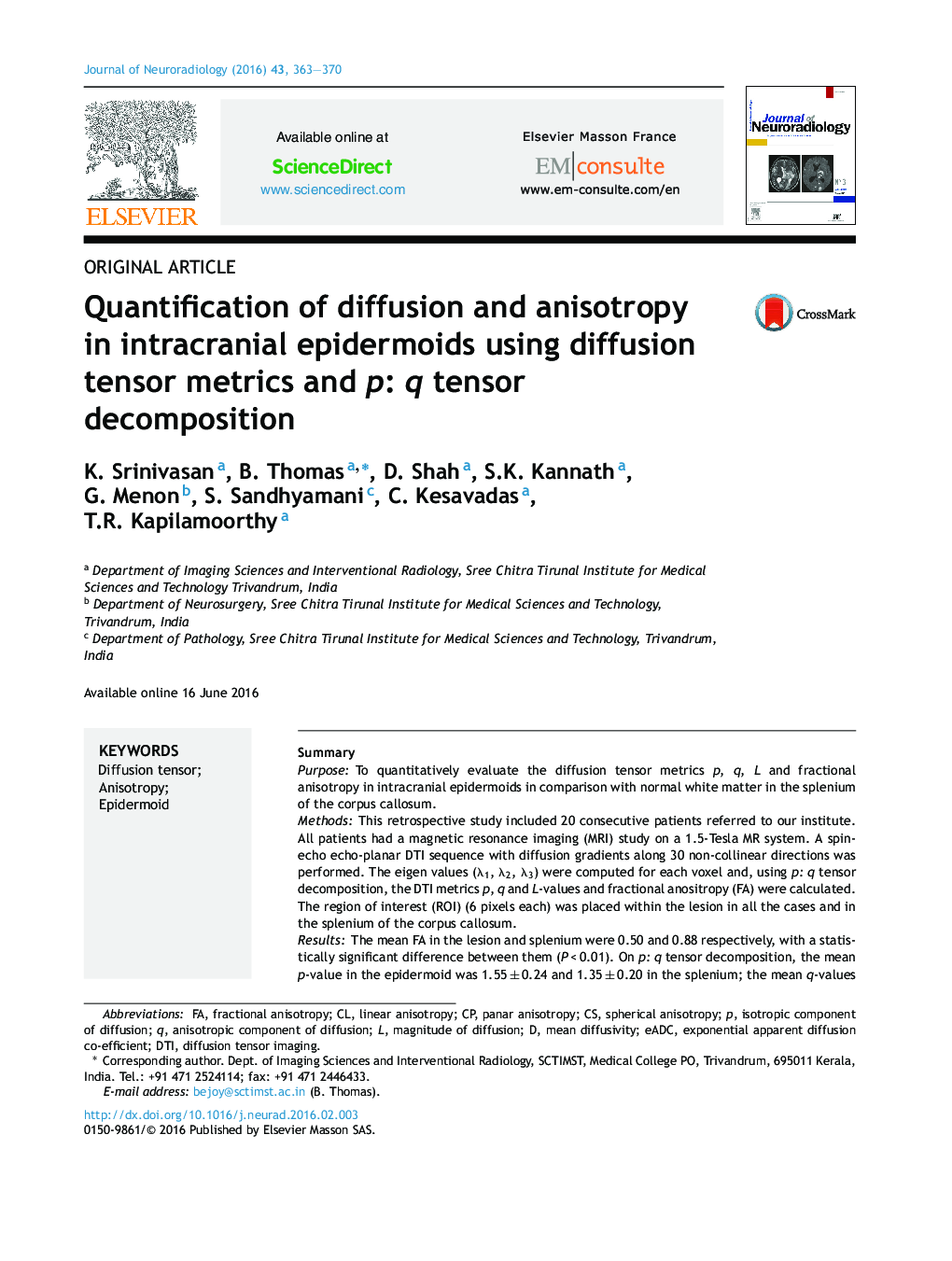| کد مقاله | کد نشریه | سال انتشار | مقاله انگلیسی | نسخه تمام متن |
|---|---|---|---|---|
| 5726937 | 1411595 | 2016 | 8 صفحه PDF | دانلود رایگان |

SummaryPurposeTo quantitatively evaluate the diffusion tensor metrics p, q, L and fractional anisotropy in intracranial epidermoids in comparison with normal white matter in the splenium of the corpus callosum.MethodsThis retrospective study included 20 consecutive patients referred to our institute. All patients had a magnetic resonance imaging (MRI) study on a 1.5-Tesla MR system. A spin-echo echo-planar DTI sequence with diffusion gradients along 30 non-collinear directions was performed. The eigen values (λ1, λ2, λ3) were computed for each voxel and, using p: q tensor decomposition, the DTI metrics p, q and L-values and fractional anositropy (FA) were calculated. The region of interest (ROI) (6 pixels each) was placed within the lesion in all the cases and in the splenium of the corpus callosum.ResultsThe mean FA in the lesion and splenium were 0.50 and 0.88 respectively, with a statistically significant difference between them (P < 0.01). On p: q tensor decomposition, the mean p-value in the epidermoid was 1.55 ± 0.24 and 1.35 ± 0.20 in the splenium; the mean q-values in the epidermoid was 0.67 ± 0.13 and 1.27 ± 0.17 in the splenium; the differences were statistically significant (P = 0.01 and < 0.01 respectively). The significant difference between p- and q-values in epidermoids compared with the splenium of callosum was probably due to structural and orientation differences in the keratin flakes in epidermoids and white matter bundles in the callosum. However, no significant statistical difference in L-values was noted (P = 0.44).ConclusionDTI metrics p and q have the potential to quantify the diffusion and anisotropy in various tissues thereby gaining information about their internal architecture. The results also suggest that significant differences of DTI metrics p and q between epidermoid and the splenium of the corpus callosum are due to the difference in structural organization within them.
Journal: Journal of Neuroradiology - Volume 43, Issue 6, December 2016, Pages 363-370